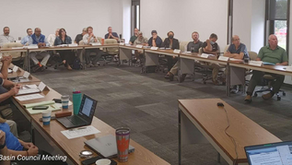Simplify Asset Management for Better Results
- JD Solomon
- Jun 15, 2020
- 2 min read
Updated: Dec 11, 2022

Are you drowning in the many activities related to what to do in your asset management program? Are you spending valuable resources and little very few short-term results? Are you tired of paying large sums of money to consultants and software vendors? If so, simply with the Seven Questions of Asset Management to get better results.
The Evolution of Asset Management
The practice of asset management has grown in sophistication over the past 40 years. In some ways, it has become a cottage industry for consultants and academics. It has also become a niche professional career track in organizations that embrace it. Complexity has replaced straightforwardness.
The Seven Questions Provide An Effective Approach
The Seven Questions of Asset Management were developed in the late 1990s. They remain just as applicable now as they were then. More importantly, they provide a level of simplicity that is necessary for understanding by executives, senior managers, and beginner/intermediate practitioners. The seven questions are:
What do we have? (and where is it?)
What is it worth?
What condition is it in?
Do we need to renew or replace it?
When do we renew or replace it?
How much will it cost?
How will we finance it?
Questions 1, 2, and 3 are closely related to collecting data and developing a foundation for the current state. Asset management has its root in accounting and accountability. On one hand, the first three questions of asset management are essential to what asset management is. Unfortunately, many asset management programs are driven sequentially from this perspective. Too many resources are expended on documentation and accountability, leading to a failure to provide meaningful short-term value to their organizations. Many asset management programs collapse under their own weight.
Questions 4, 5, 6, and 7 address the ‘so what?’. These questions really dive into more advanced concepts related to system diagnostics and prognostics. This is the fertile ground for financial experts, reliability engineers, and maintenance engineers. These latter 4 questions provide the primary value related to asset management for most organizations.
Different guidance documents provide similar but slightly different overarching fundamentals of asset management. ISO 55000 has four fundamentals overlain onto seven components of an asset management system. The Institute of Asset Management (IAM) uses a taxonomy with six groups of 39 total asset management activities. Whether it is four fundamentals matrixed with seven components or 39 activities, it is easy for any organization to be overwhelmed by the “what” to do when it comes to implementing an asset management program.
Three Practical Solutions
There are three practical solutions for getting better results from your asset management program. First, use the seven questions of asset management as your guiding beacon. Second, achieve value by partially addressing the first three questions and then creating value by addressing the next four questions – the process should be iterative, not sequential. Third, incorporate some uncertainty analysis into the process to determine what provides the best bang for the buck for future activities.
Get better results from your asset management program. Replace complexity with straightforwardness. Simplify by using the Seven Questions of Asset Management.
JD Solomon Inc provides services related to facilities, infrastructure, and the natural environment. Contact us for more information on project development, asset management, and facilitation.




Comments